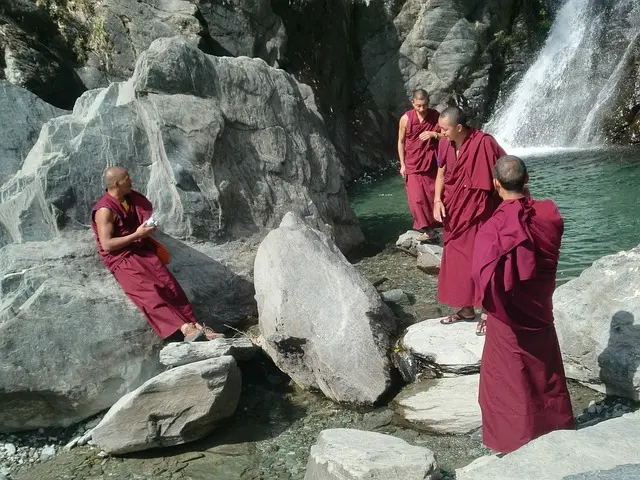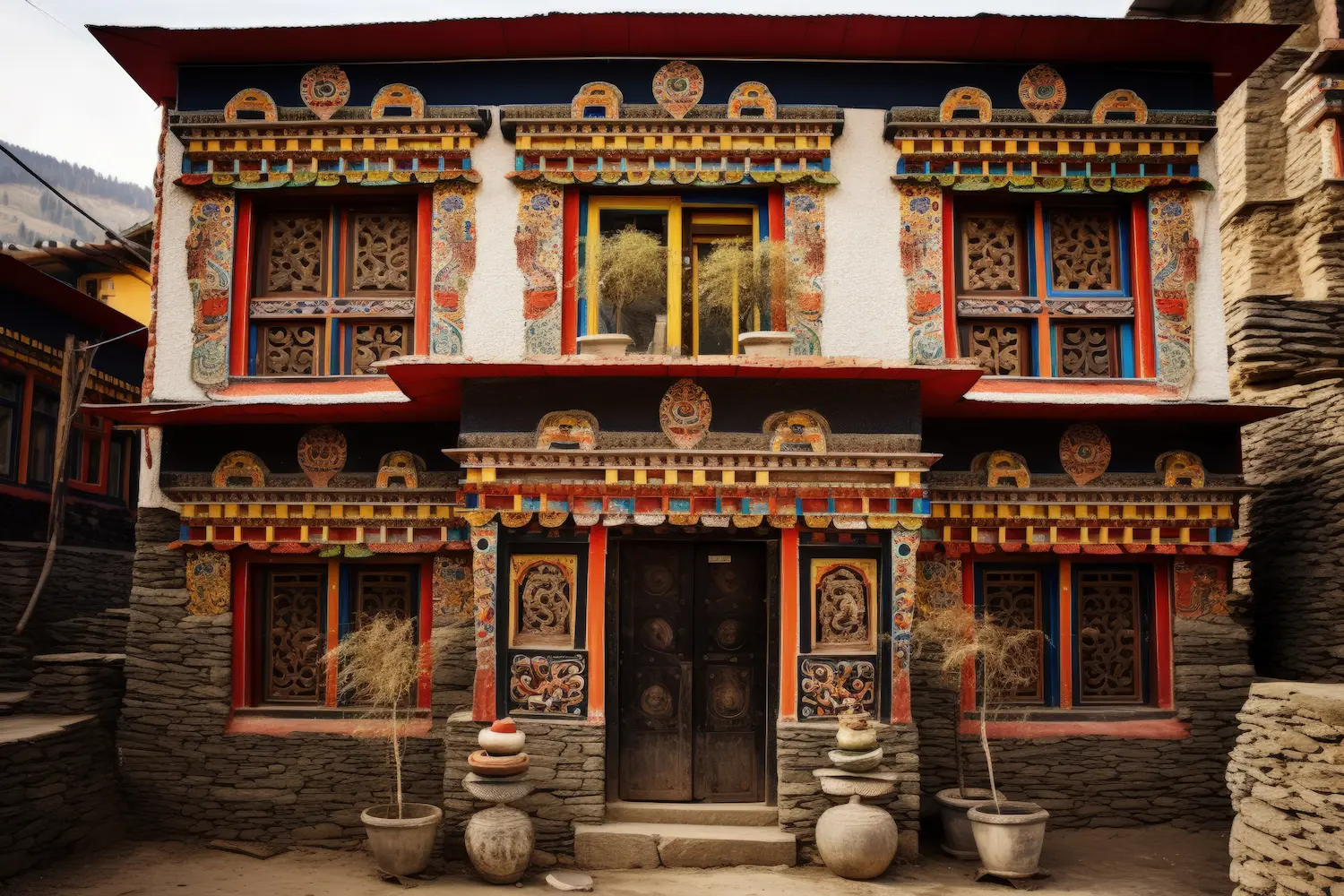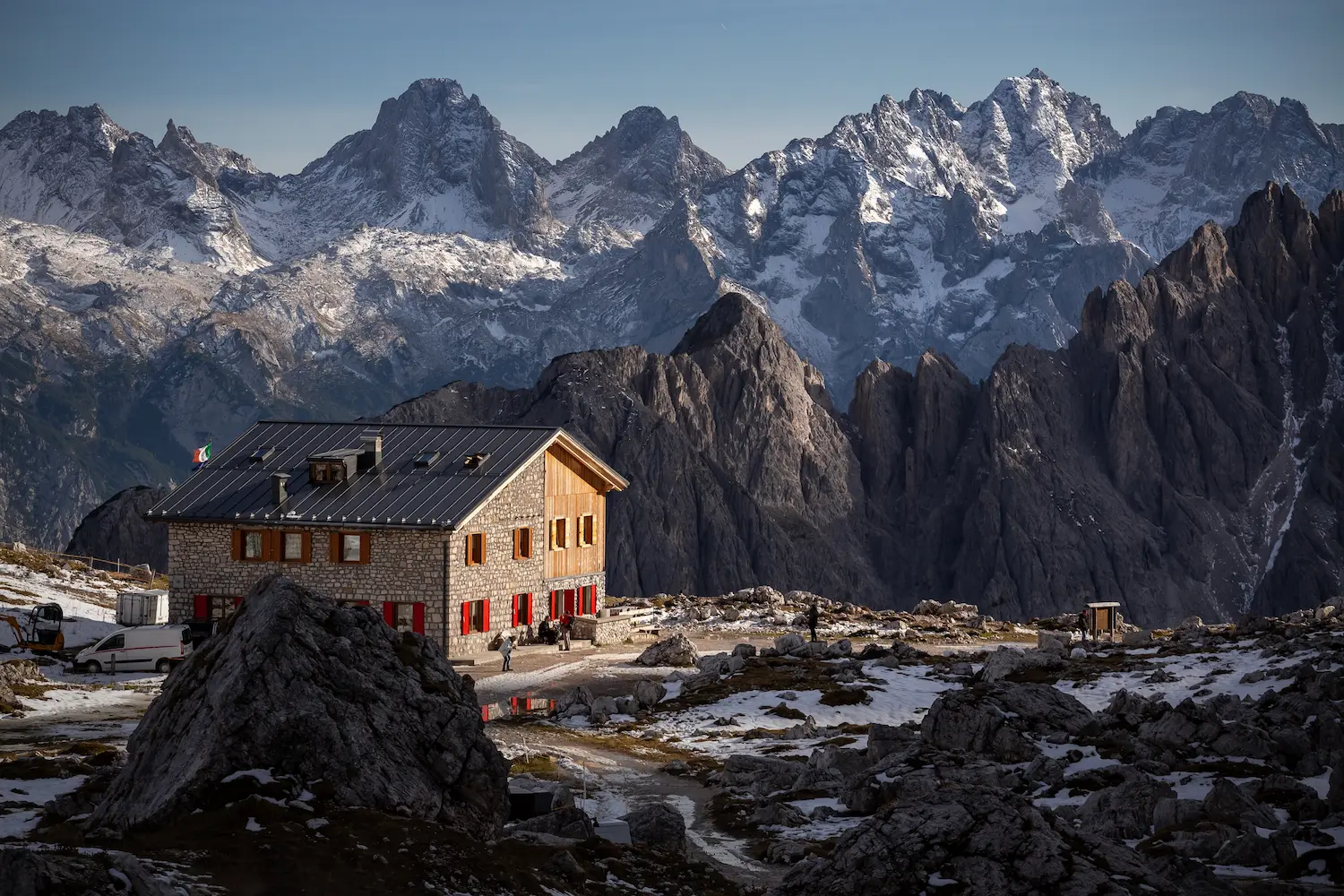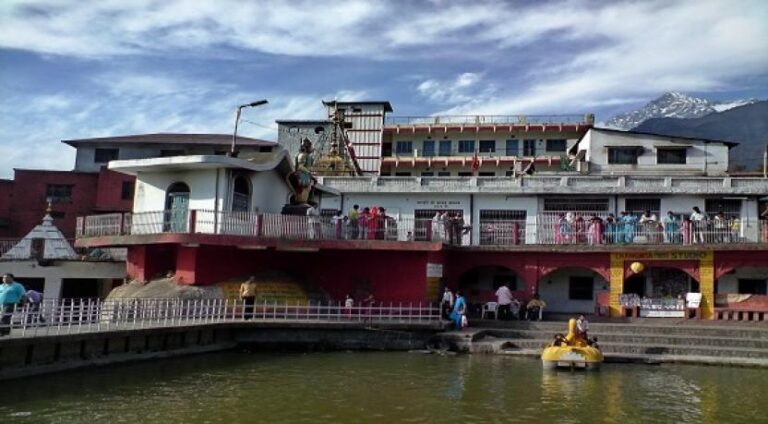Nestled in the serene Himalayan foothills of Himachal Pradesh, Dharamshala beckons with its captivating blend of natural beauty and cultural richness, embodied beautifully in its traditional architecture. Join me as we delve deeper into the architectural wonders that define this enchanting region.
1. Distinctive Characteristics of Himachali Architecture
Himachali architecture is renowned for its intricate woodwork, sturdy stone construction, and practical design suited to the mountainous terrain. Houses often feature sloping roofs covered with slate tiles, reflecting the need to shed heavy snowfall during winters.
2. Influence of Tibetan Culture
Dharamshala, particularly McLeod Ganj, serves as a sanctuary for Tibetan refugees and the residence of the Dalai Lama. This cultural fusion is evident in the architecture, where traditional Tibetan elements like colorful facades, prayer flags, and ornate wood carvings blend seamlessly with local Himachali styles.

3. Traditional Building Techniques
- Materials: Locally sourced materials such as pine, cedar, and slate dominate construction. The ‘Kath-Kuni’ technique, using interlocking wooden beams and stones without mortar, is a hallmark of Himachali craftsmanship. b. Design: Houses are typically multi-storied with a central courtyard or veranda, promoting community interaction while offering protection from the elements. c. Sustainability: Built to withstand harsh mountain climates, these structures exemplify sustainable architecture through their use of natural materials and passive heating and cooling techniques.
4. Key Architectural Landmarks in Dharamshala
- Tsuglagkhang Complex: This spiritual hub houses the Tsuglagkhang Temple, exuding traditional Tibetan architectural aesthetics amidst picturesque surroundings. b. Norbulingka Institute: Dedicated to preserving Tibetan arts and culture, Norbulingka showcases traditional building methods and artisan crafts. c. St. John in the Wilderness Church: A relic of British colonial influence, known for its neo-Gothic architecture set amidst the serene deodar forests.

5. Challenges and Preservation Efforts
While traditional Himachali architecture charms with its timeless appeal, it faces challenges from modern development pressures and changing lifestyles. Conservation efforts are vital to safeguard these architectural treasures, ensuring they continue to enrich the cultural fabric of the region.
6. Experiencing Himachali Architecture
Visitors can immerse themselves in Dharamshala’s architectural splendor by exploring local villages like Dharamkot, Bhagsu, and Naddi. Guided tours of monasteries, temples, and traditional homes offer insights into centuries-old building techniques and the cultural narratives they embody.
Dharamshala’s traditional Himachali architecture is more than mere buildings; it is a testament to the region’s rich heritage and the resilience of its people. As you traverse at Resort in Himachal Pradesh its winding alleys and vibrant streets, you’ll discover a tapestry of history, culture, and craftsmanship that invites you to connect with the past while embracing the present.




